The best aero helmets can help you ride faster by saving watts while remaining comfortable. Heavy, odd-looking and unbearably stuffy aero cycling helmets are long gone. Aero is no longer absolutely everything.
As WorldTour time-trial helmets have become more outlandish, the boundaries have blurred between standard road cycling helmets and aerodynamically optimised ones.
Unless you do a lot of cycling in hot weather, then, you could wear an aero cycling helmet all year round.
If every watt counts, an aero road helmet is also one of the best-value aero upgrades available, as we found from recent wind tunnel testing.
So if you want to reduce drag with your helmet, here are the best options to do so. If you want to know more about aero helmets, you can jump to our buyer's guide at the end of this article.
Best aero helmets in 2025, as rated by our expert testers
Giro Eclipse Spherical

- £240 / $250 / €260 / AU$430 as tested
- Pros: Aero profile; well ventilated; good fit; safety features
- Cons: Significant cost
The Giro Eclipse Spherical is aerodynamically shaped and feels fast to ride. But the excellent aero road helmet isn't excessively heavy or stuffy.
Safety tech includes Giro's own Spherical system and MIPS, while spongy padding and an effective retention system ensure the Eclipse Spherical is comfortable for hours on end.
With few weaknesses, the Giro Eclipse Spherical can be considered an all-round, admittedly expensive, aero cycling helmet.
Specialized S-Works Evade 3
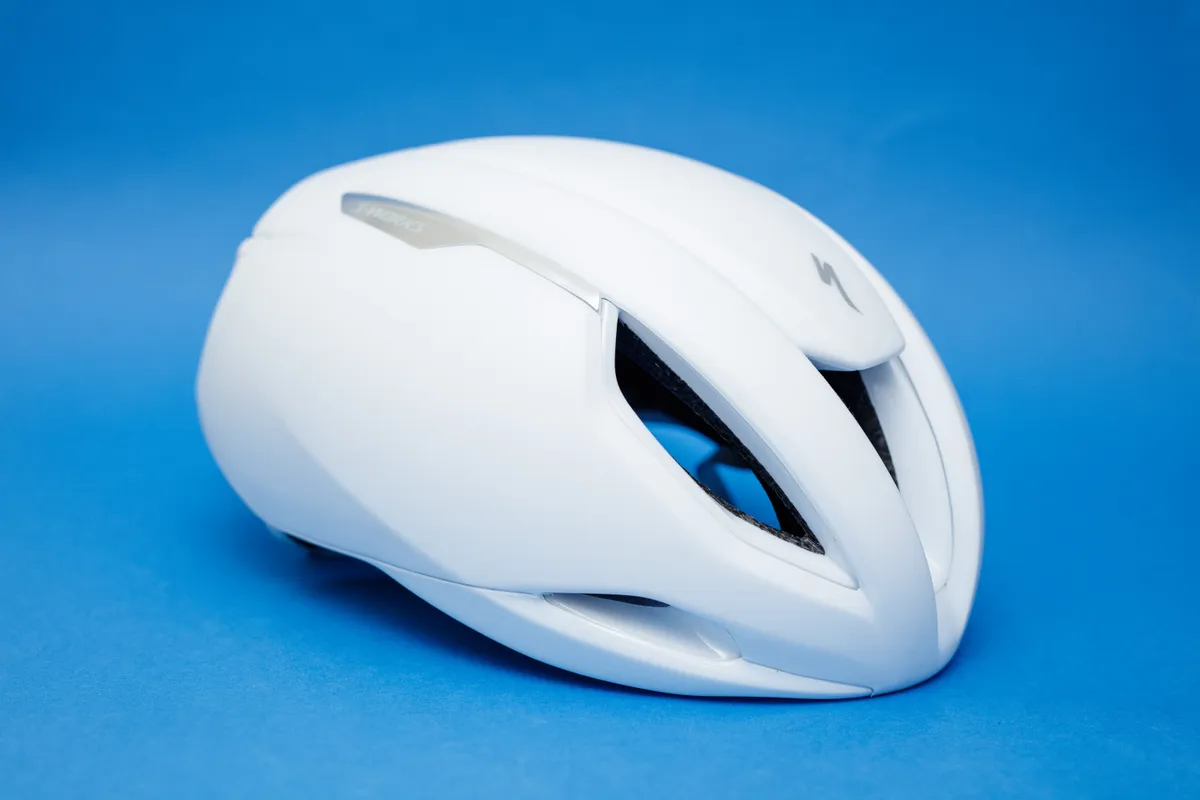
- £275 / $300 / €330 as tested
- Pros: Overall performance; decent looks; aero design
- Cons: Huge cost
The Specialized S-Works Evade 3 is a fantastic aero helmet with a drag-saving design that allows some air to flow past your head.
This degree of ventilation and relatively conventional styling (for an aero road helmet) could make the S-Works Evade 3 suitable for year-round use – as long as you don't live somewhere really hot.
The MIPS-equipped S-Works Evade 3 scores full marks for safety in Virginia Tech's helmet testing.
However, the aero bike helmet will be expensive to replace if you do crash or have an accident on your bike.
Kask Utopia Y
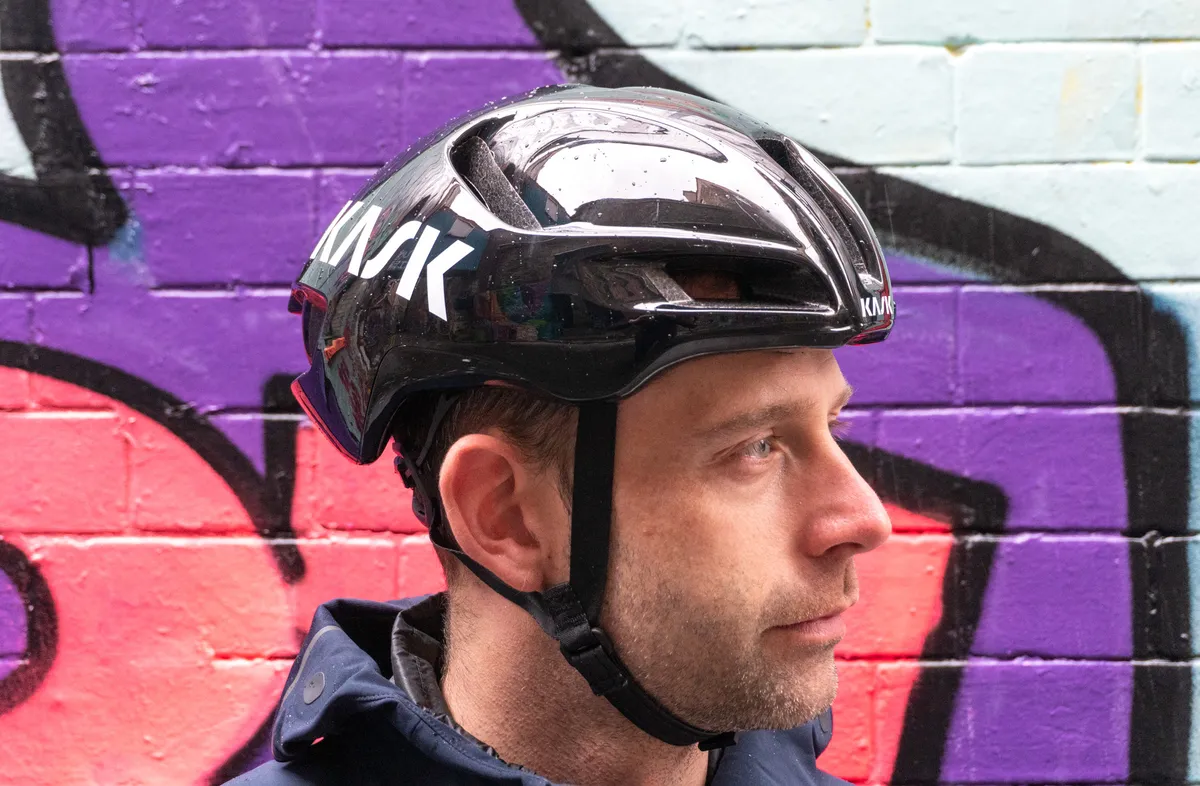
- £245 / $300 / €275 / AU$410 as tested
- Pros: Decent fit; better padding; reasonable ventilation
- Cons: Sub-standard fit mechanism; lacks MIPS
For the most part, it's no bad thing that the Kask Utopia Y is barely different from the previous-generation Utopia aero road helmet. The shape and consequently, as far as we can tell, the aerodynamic performance is unchanged.
We found Kask has succeeded in its attempt to improve the Utopia Y's comfort by adding padding.
However, to our tester, the Kask Utopia Y's adjustment dial felt tacky for a premium aero helmet.
Kask says the Utopia Y excels in its own safety testing, but the aero bike helmet doesn't have MIPS or a high score in Virginia Tech Helmet Lab testing.
MET Manta MIPS
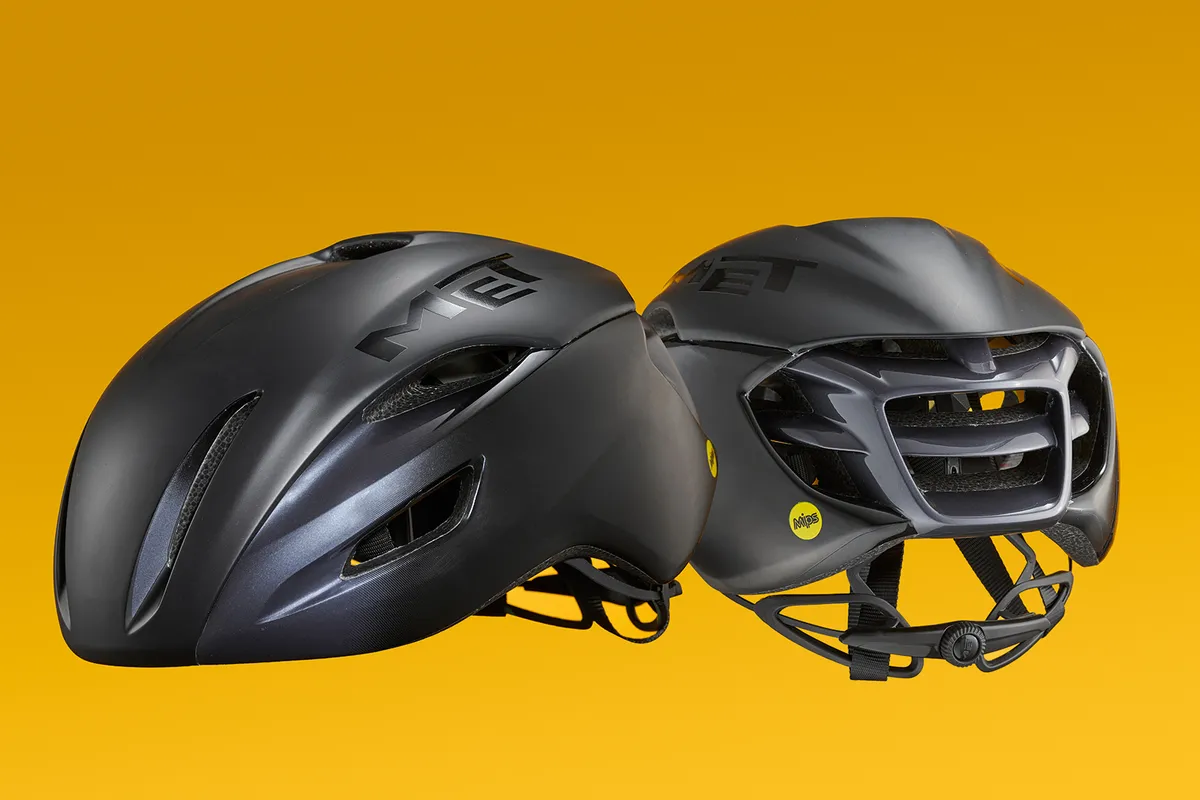
- £220 / €250 / AU$388 as tested
- Pros: Low weight; excellent fit; comfort
- Cons: Price
MET has taken a minimalist approach to the aero road helmet with the Manta MIPS.
The sparsely vented shell is characteristic of the aero genre. The helmet's narrowness, which minimises weight and keeps looks conventional, is less so.
The MET Manta MIPS is comfortable, well fitting and aerodynamic without being stuffy. However, it is very expensive.
Rudy Project Nytron
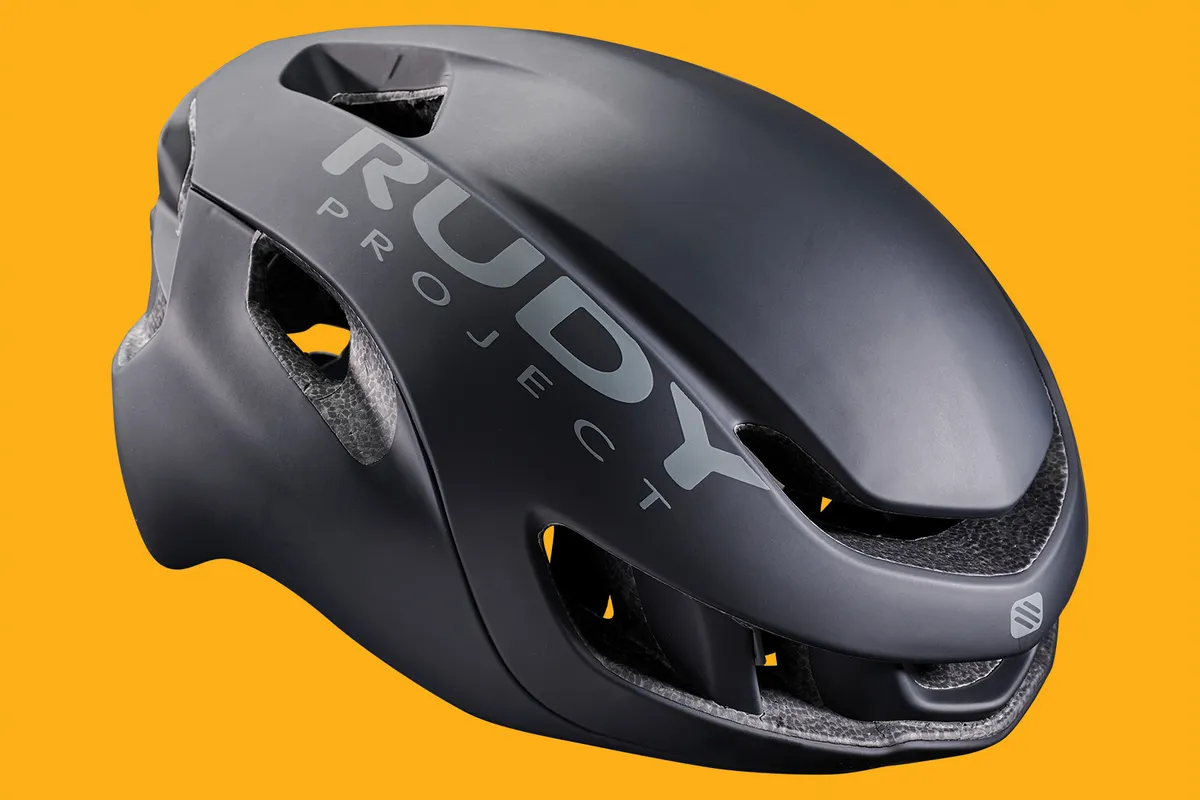
- £153 / $325 / €200 as tested
- Pros: Looks; weight; fit
- Cons: Ventilation dependent on riding position
In terms of appearance and cooling, the Rudy Project Nytron has more in common with standard road cycling helmets than bulkier aero helmets. However, its aerodynamic design and weight are similar to its competitors.
The aero bicycle helmet enables air to flow past your head but only when riding in a low position.
The Rudy Nytron meets the demanding safety standard (WG11 rotational impact) used by Kask.
Trek Ballista MIPS
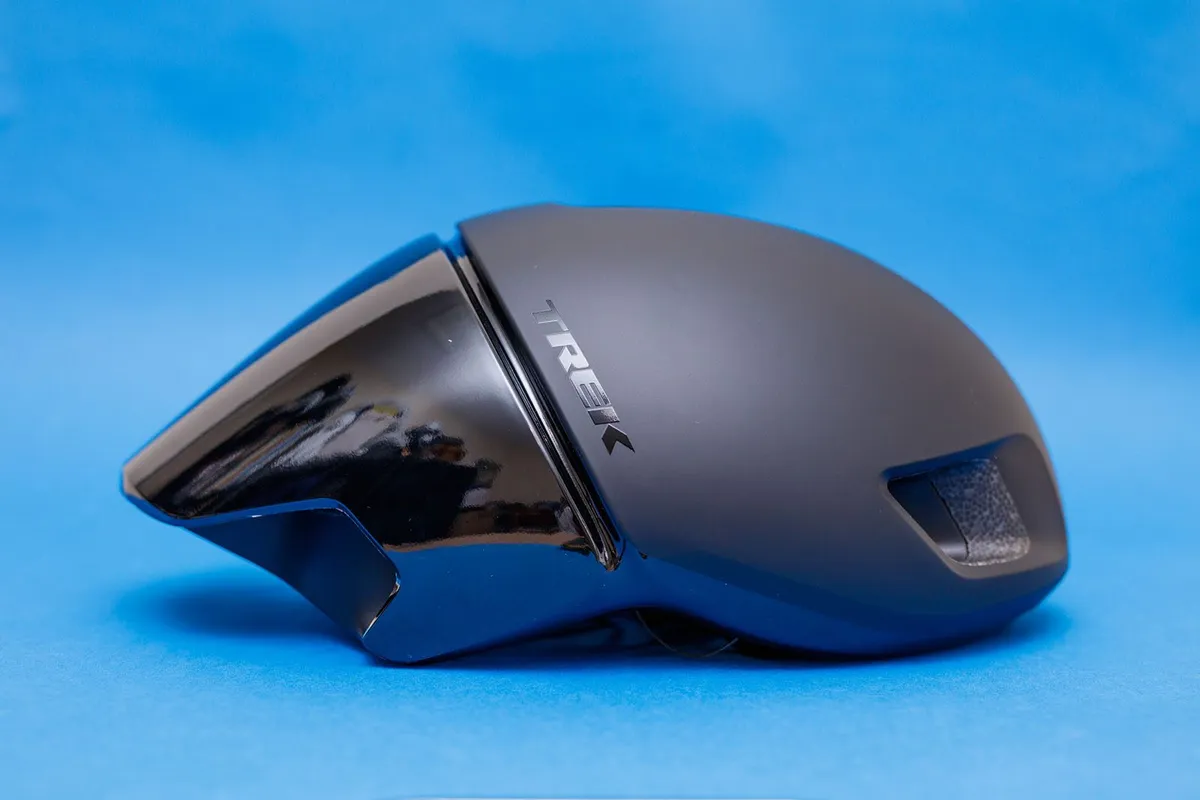
- £229.99 / $299.99 / €299.99 as tested
- Pros: Competitive weight; comfortable; excellent safety rating
- Cons: Can feel stuffy on the hottest days
Trek's flagship aero helmet is the spiritual successor to the Bontrager Ballista, with the American brand claiming this latest model improves on the formula to the tune of 10.1 watts at 45kph.
With an aggressively aerodynamic shape that’s somewhat akin to a time-trial helmet with the bottom half lopped off, the Ballista makes its intentions clear.
In use, it impresses on most fonts, offering excellent comfort and good ventilation on all but the hottest days. We were also impressed by the Ballista's high-quality retention system and excellent safety rating.
Buyer's guide to aero helmets
Are aero helmets worth it?
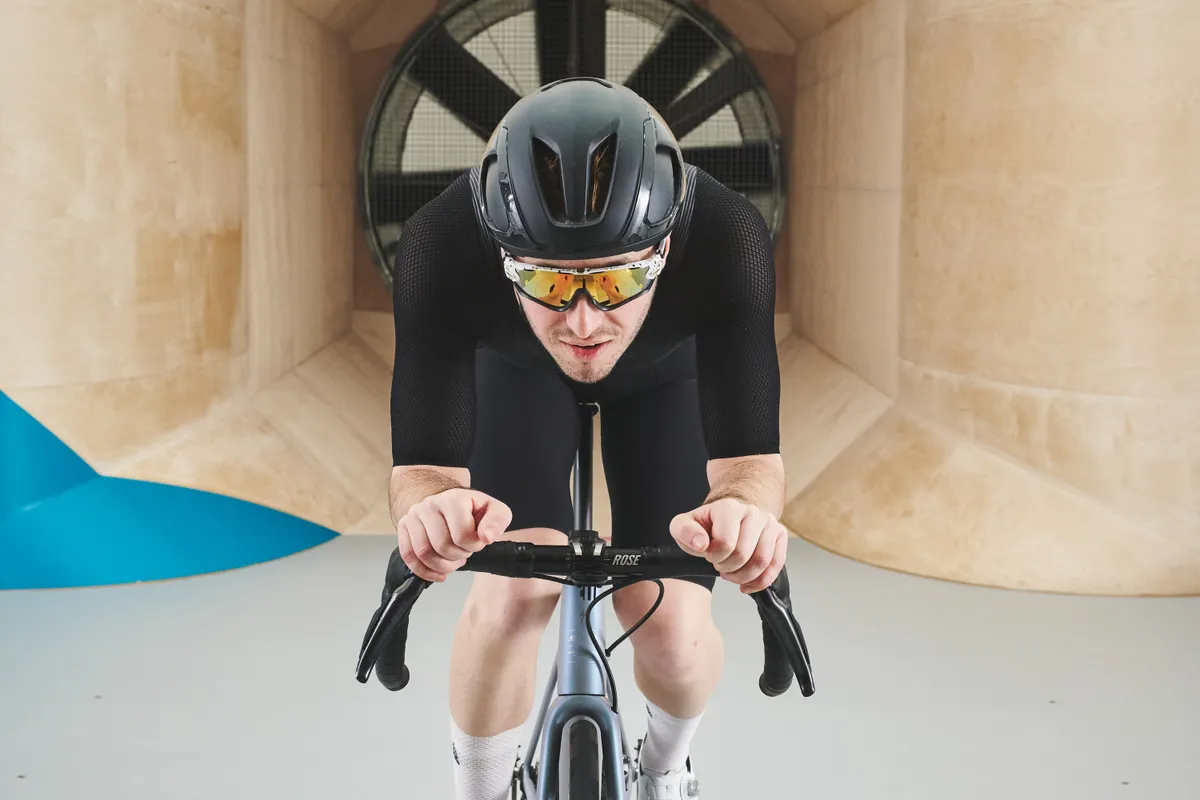
As with most things, the answer is ‘it depends’.
If you don’t really care about your average speed, or beating your riding buddies at the local circuit race or town sign sprint, then an aero helmet might not be for you.
On the other hand, if you’re interested in riding a bit faster for the same effort (or the same speed for less effort), then an aero helmet can be a relatively cheap and easy way to achieve this.
When we recently pitted a vented helmet against an aero helmet in the wind tunnel (as part of our best value aero upgrades test), the aero-optimised lid saved 7.56 watts at 35kph.
In terms of value, it easily beat other upgrades (in terms of pounds spent per watt saved) such as a set of carbon aero wheels or a road bike skinsuit.
Which is the fastest aero helmet?
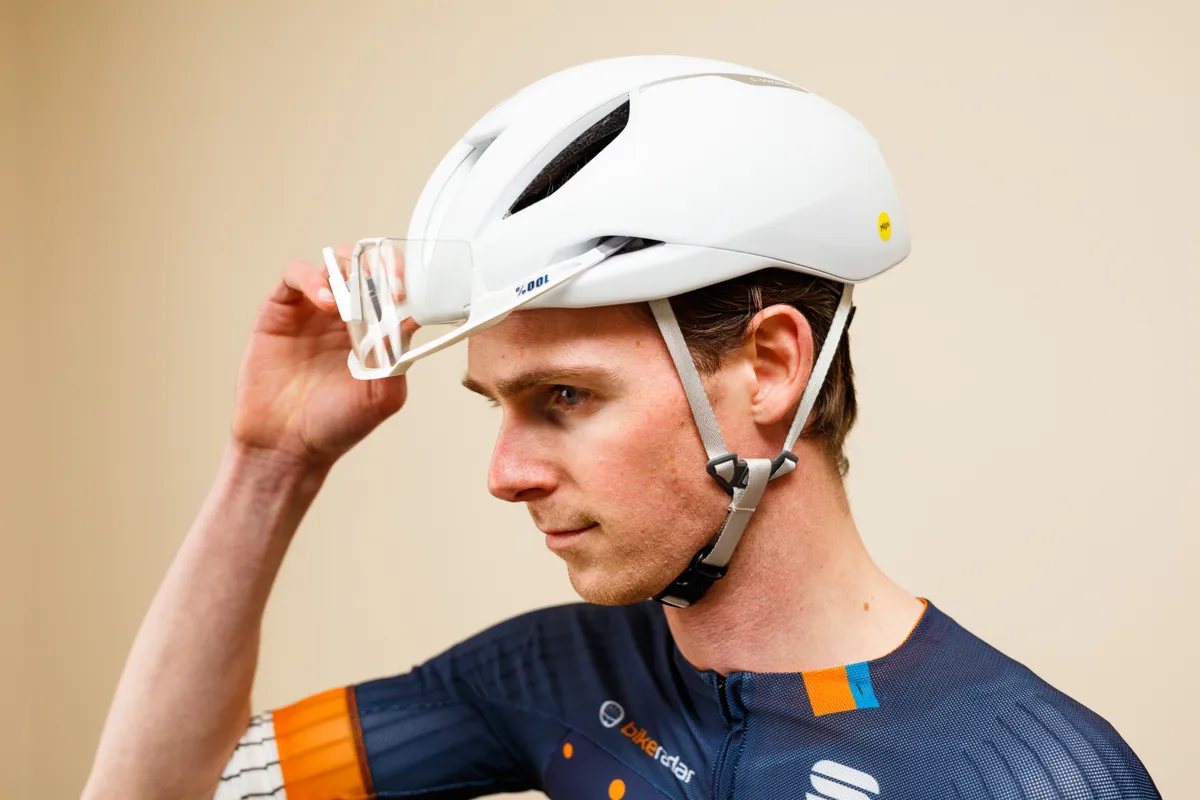
Once you’ve decided you want an aero helmet, the obvious next question is “Well, which one is fastest?”
It’s a fair question, but unfortunately it’s a tricky one to answer.
Just like with time trial helmets, each brand designs its aero road helmets with different speeds, rider positions and aerodynamic philosophies in mind.
There are many competing ideas of what represents an ‘optimum’ head angle to design an aero road helmet around, for example.
Because of this, the aerodynamic performance of helmets can be fairly rider- and position-dependent. What’s fastest for one rider and their position on the bike, may not be fastest for the next.
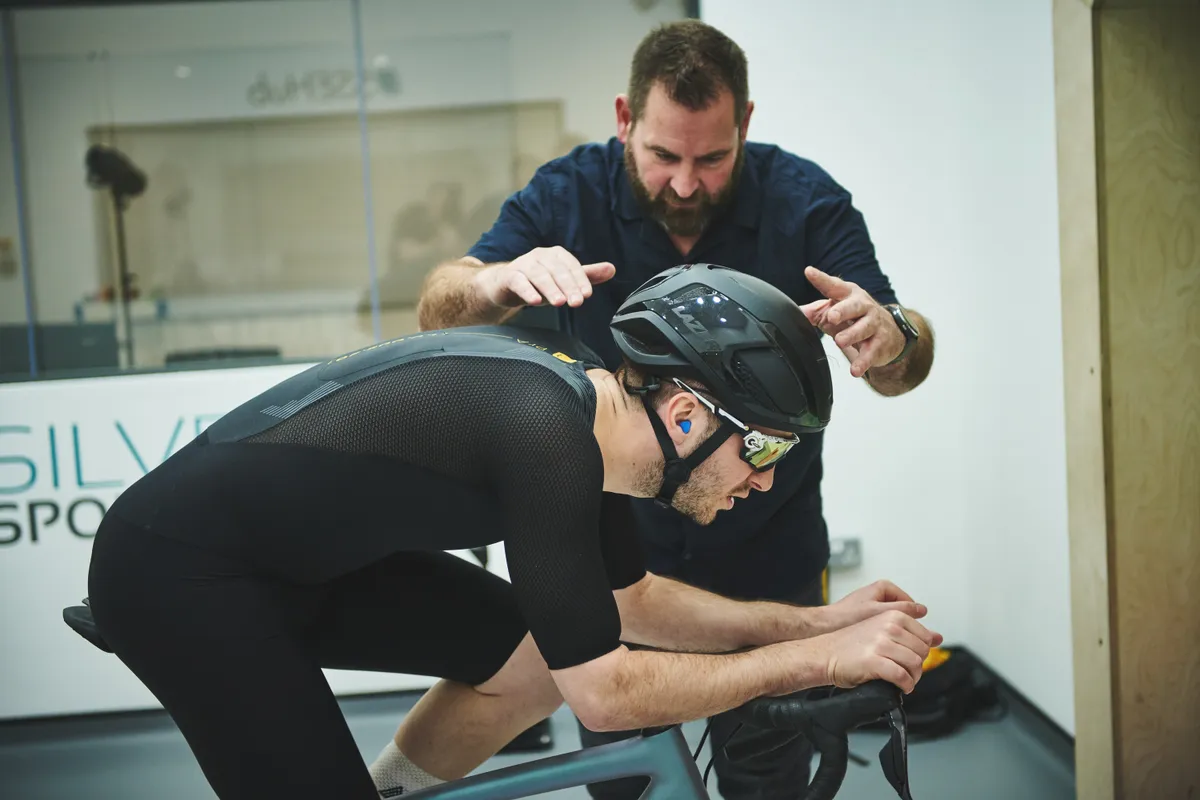
If you really want to know which is fastest for you, then, it will likely require heading to a wind tunnel or velodrome for some aero testing to find out.
Failing that, we’d suggest not worrying about it too much.
For day-to-day riding, the marginal aerodynamic differences between aero helmets don’t matter as much as factors such as comfort and ventilation, which we’ve focused on here.
What to consider when buying an aero helmet
As with aero road bikes, it’s worth considering that aerodynamic efficiency isn’t the be all and end all of helmet performance.
It’s important, of course, but factors such as comfort, ventilation, weight and safety shouldn’t be overlooked either.
Aerodynamics
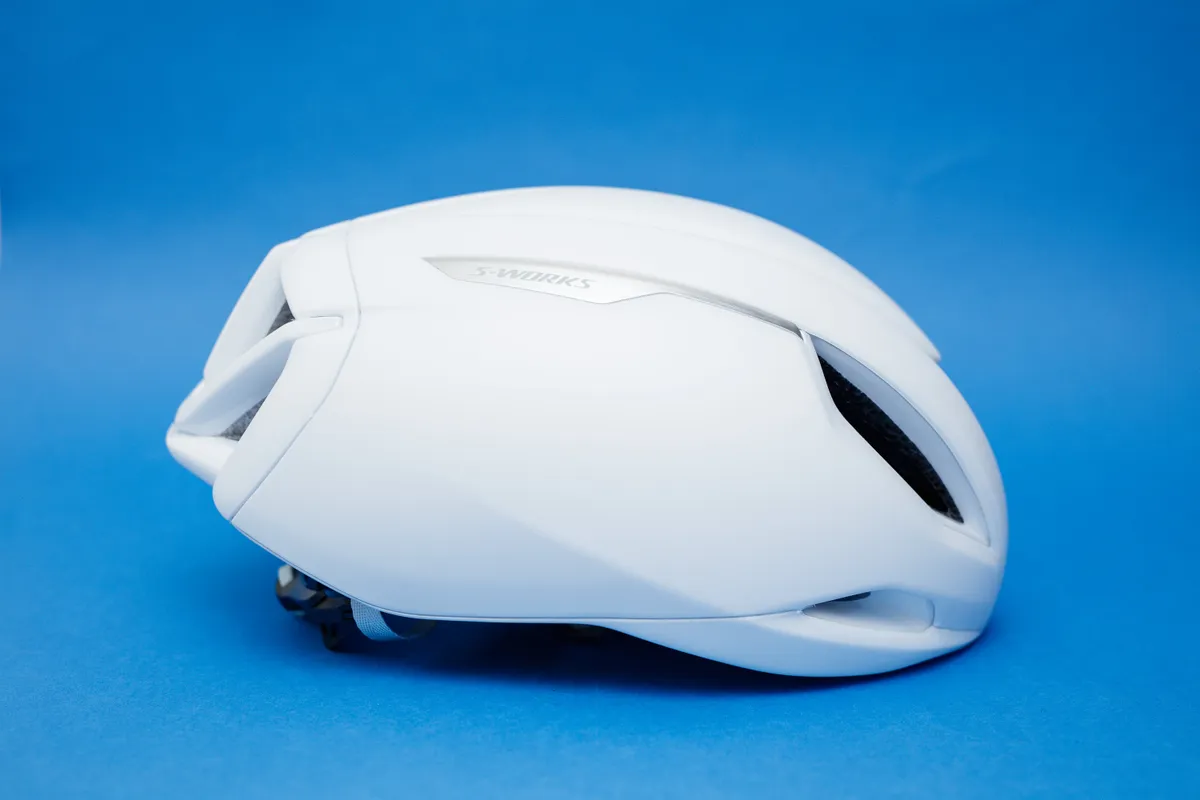
Aerodynamically optimised helmets tend to achieve efficiency via a few common methods.
Helmets such as the Specialized Evade 3, the Trek Ballista and ABUS GameChanger 2.0 are all shaped to act like truncated (or ‘Kammtail’) aerofoils, for example.
As with aero frame tubes, or deep-section aero rims, the idea is that these shapes are aerodynamically efficient by nature.
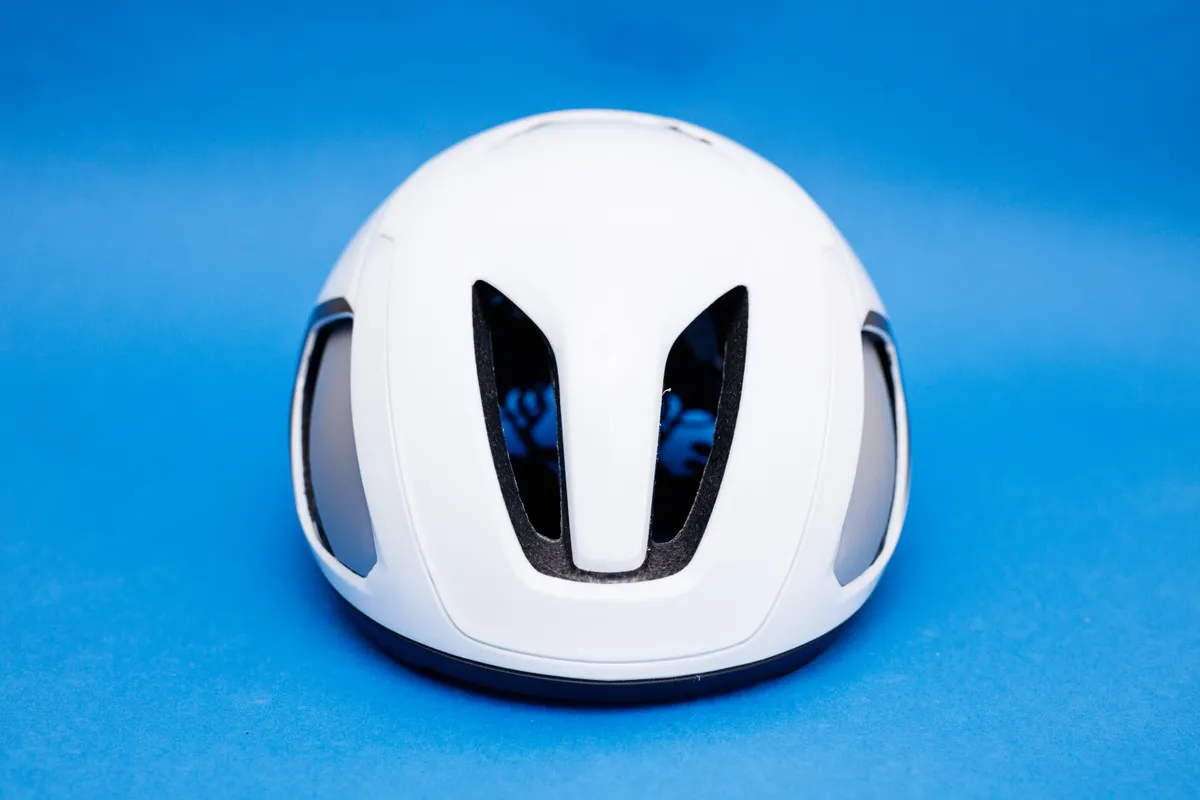
Ventilation holes typically cause drag as they allow air to flow through the helmet and on to your head, where it stalls and things get messy.
This is ideal for keeping your head cool, of course, but closing off these vents can help to direct the airflow over your head more smoothly. In turn, this can help reduce drag.
Some helmets also include one or two small aero tricks, aimed at reducing drag even further.
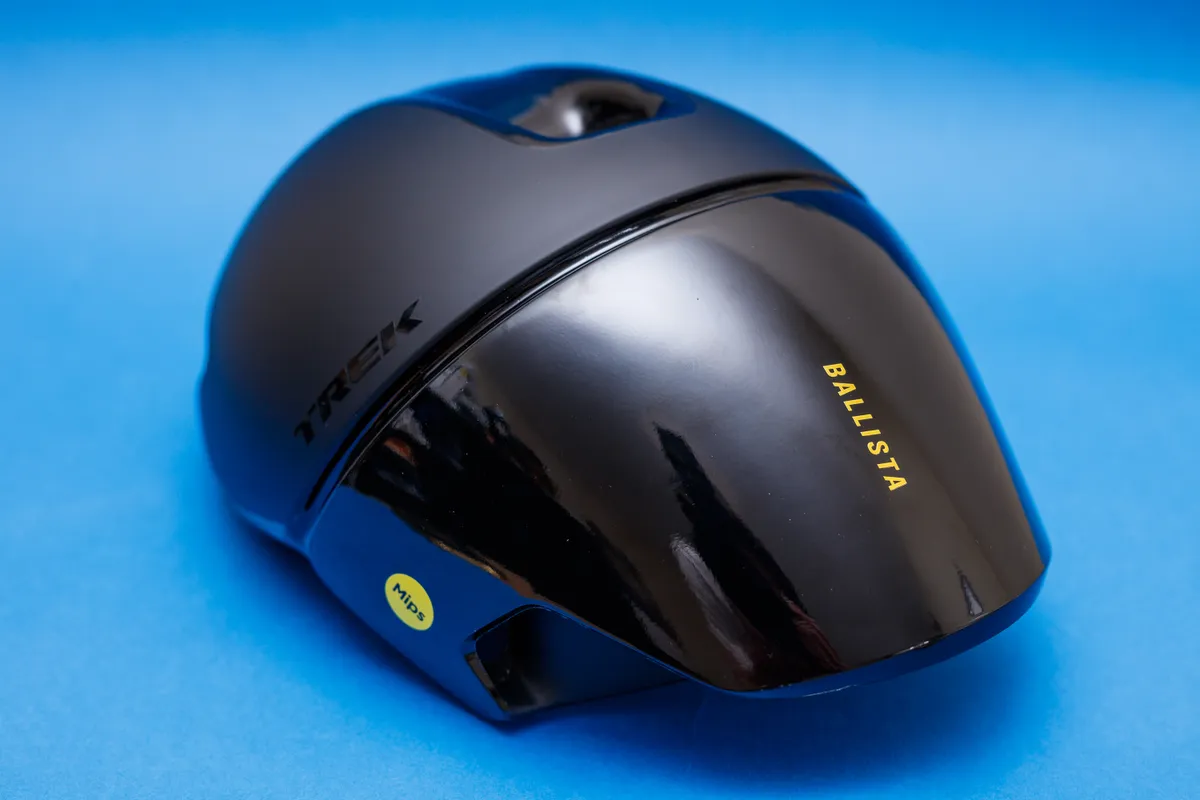
The Trek Ballista, for example, has a ‘trip line’ running horizontally across the midsection of its outer shell.
Like the dimples on a golf ball, this is claimed to reduce drag by tripping the airflow from laminar (smooth) to turbulent (rough) at an optimal point.
In theory, this helps the airflow to stay attached to the helmet for longer and reduces the size of the trailing low-pressure wake.
Ventilation
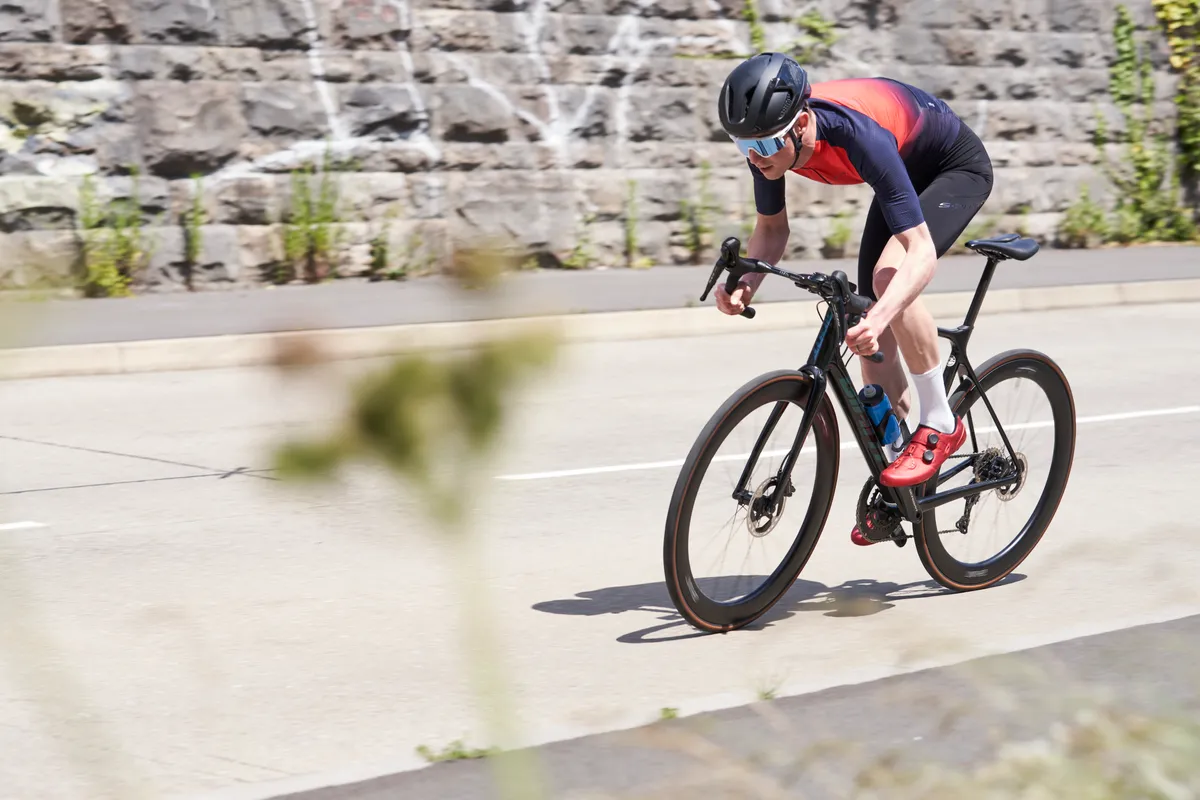
If you ride somewhere where the weather is generally cooler, or you do a lot of winter cycling, then less ventilation might be a welcome thing.
On the other hand, if you’ve ever ridden your bike in hot weather, then you’ll likely be aware that staying cool and comfortable is critical to performance.
For this reason, ventilation is a key consideration for any helmet – be it aero-optimised or not.
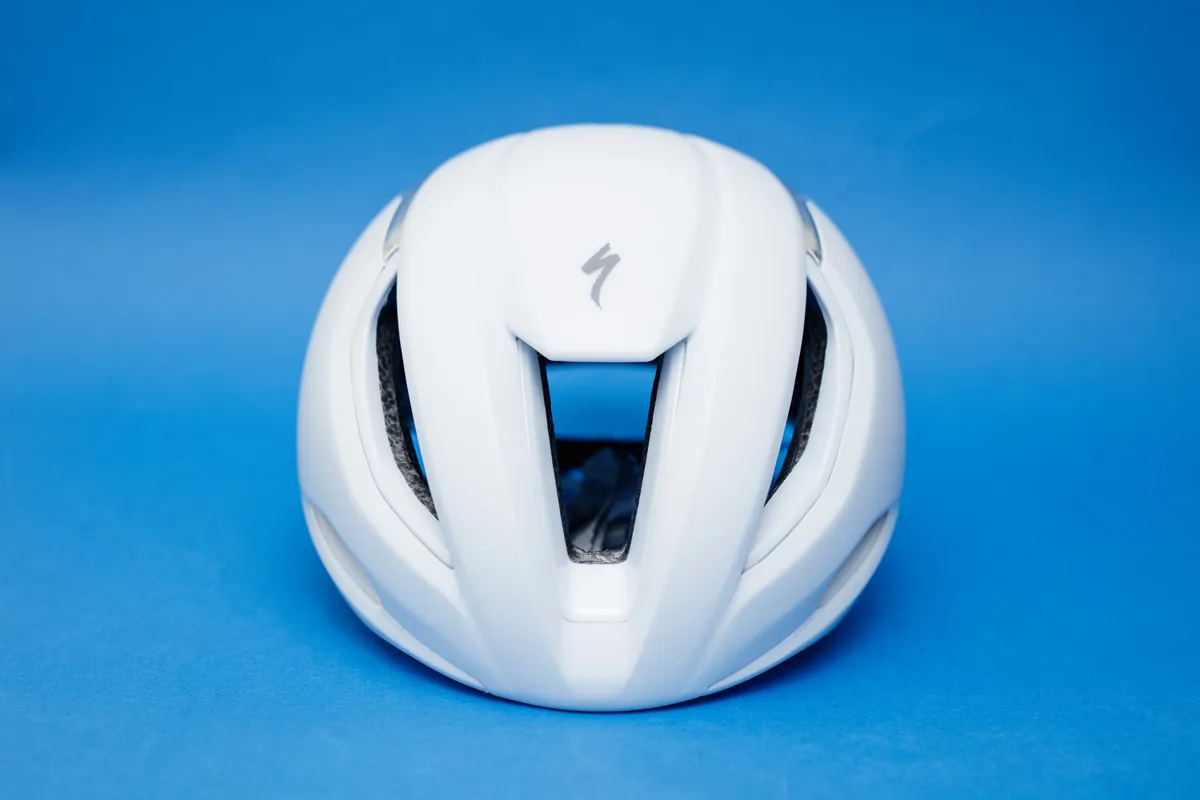
As already discussed, this can pose a problem for aero helmets because adding ventilation holes is usually detrimental to aerodynamic performance.
Time trial helmets typically feature very minimal venting for this reason.
In contrast, the best aero road helmets strike a balance between aerodynamic efficiency and ventilation.
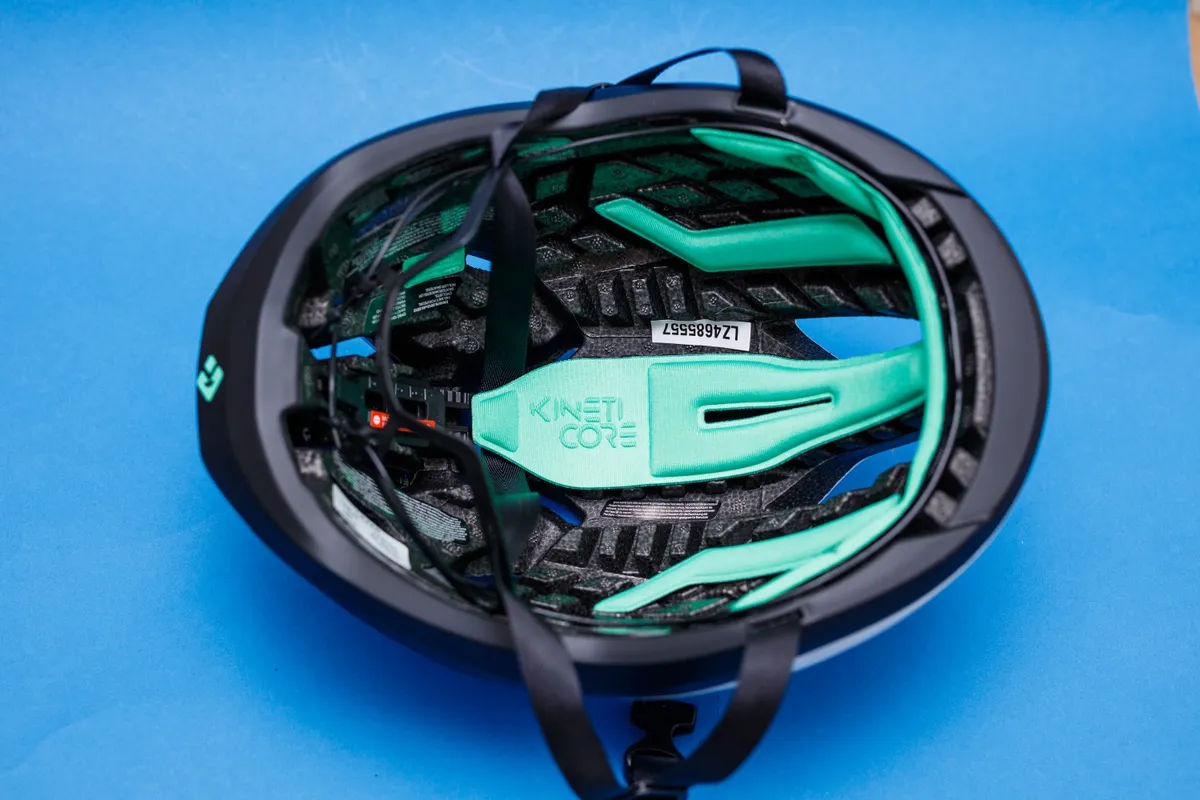
In our experience, most modern aero helmets offer excellent cooling at higher speeds, when air flow through the minimalist venting is strong.
Conversely, many can struggle at slower speeds, when airflow through the helmet is reduced and the relatively closed outer shell makes thermal radiation more difficult.
This is why we often see pros at the Tour de France using vented helmets for hot days in the mountains.
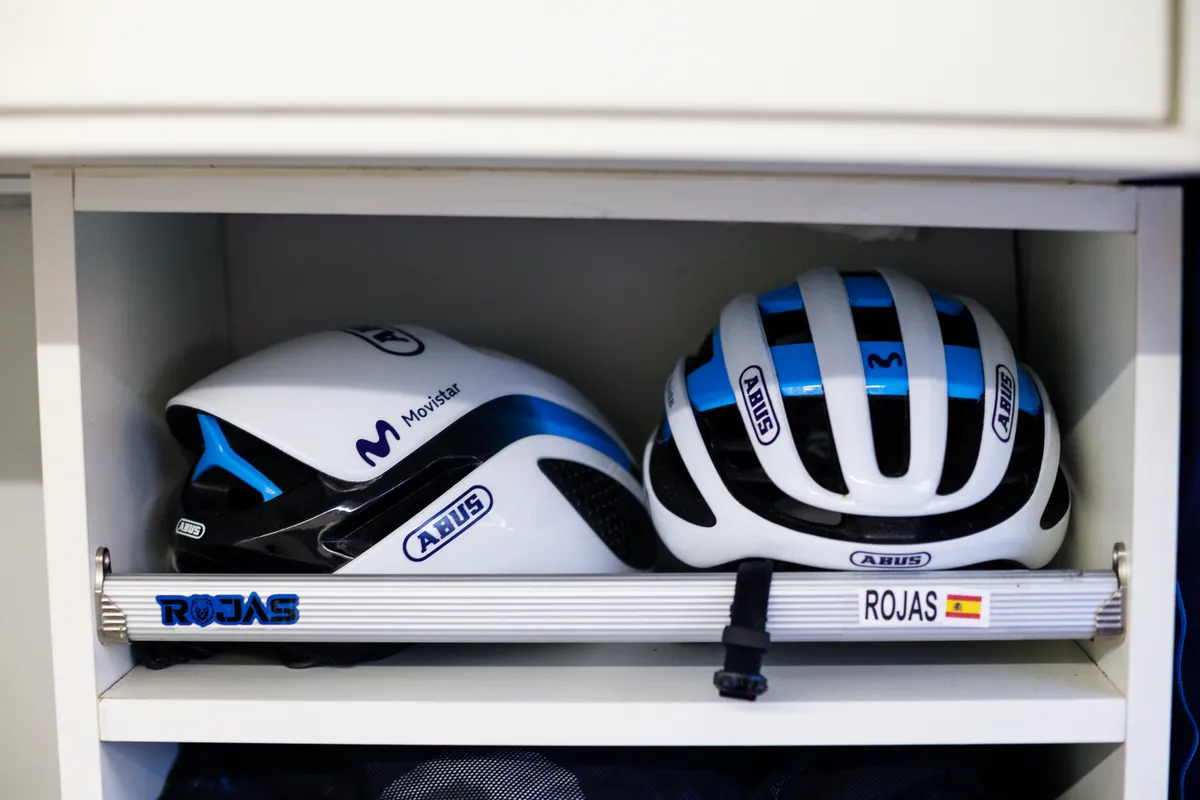
Weight
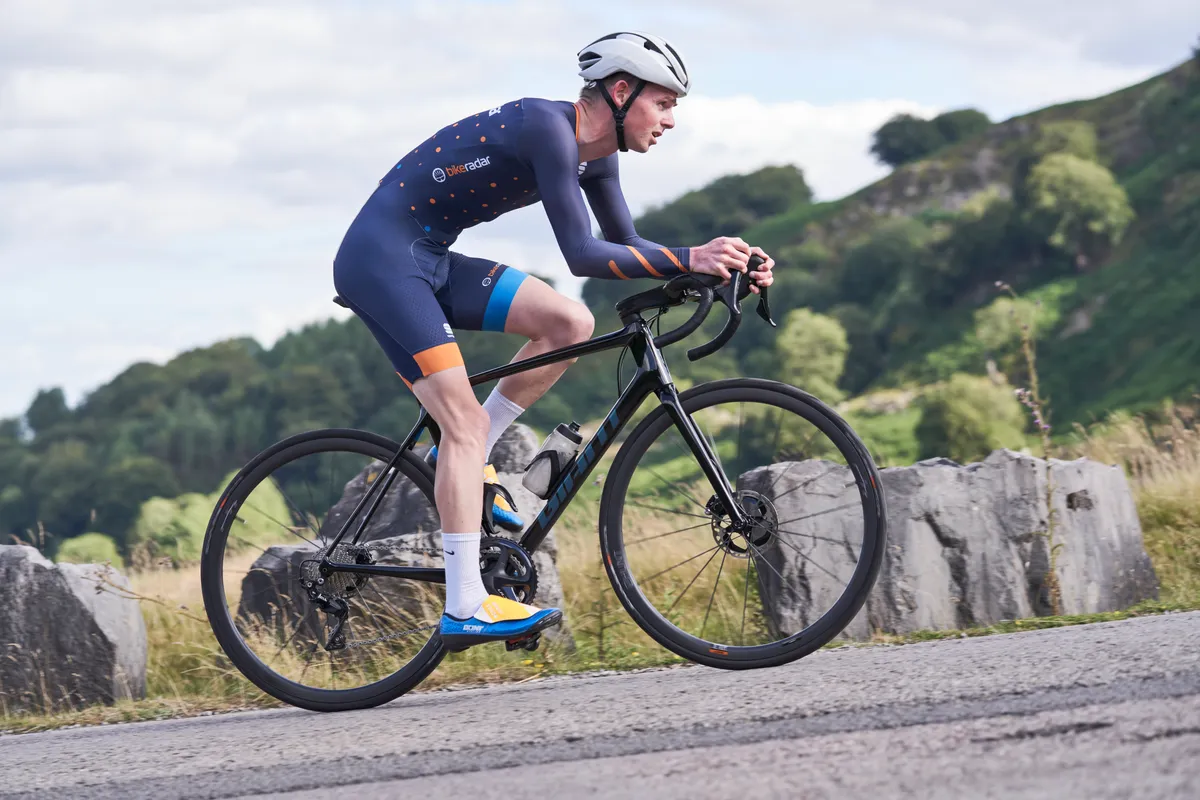
Fewer vents and a greater amount of aerodynamic shaping also tends to mean an increase in the amount of material used in the construction of aero helmets.
As a result, aero helmets are typically heavier than vented equivalents.
For most riders, though, a few tens of grams here or there isn’t likely to make much, if any, noticeable difference to performance.
With most of the best aero road helmets coming in under 300g for a size medium, weight usually isn’t an issue for all but the most dedicated weight weenies or hill climb racers.
Safety features
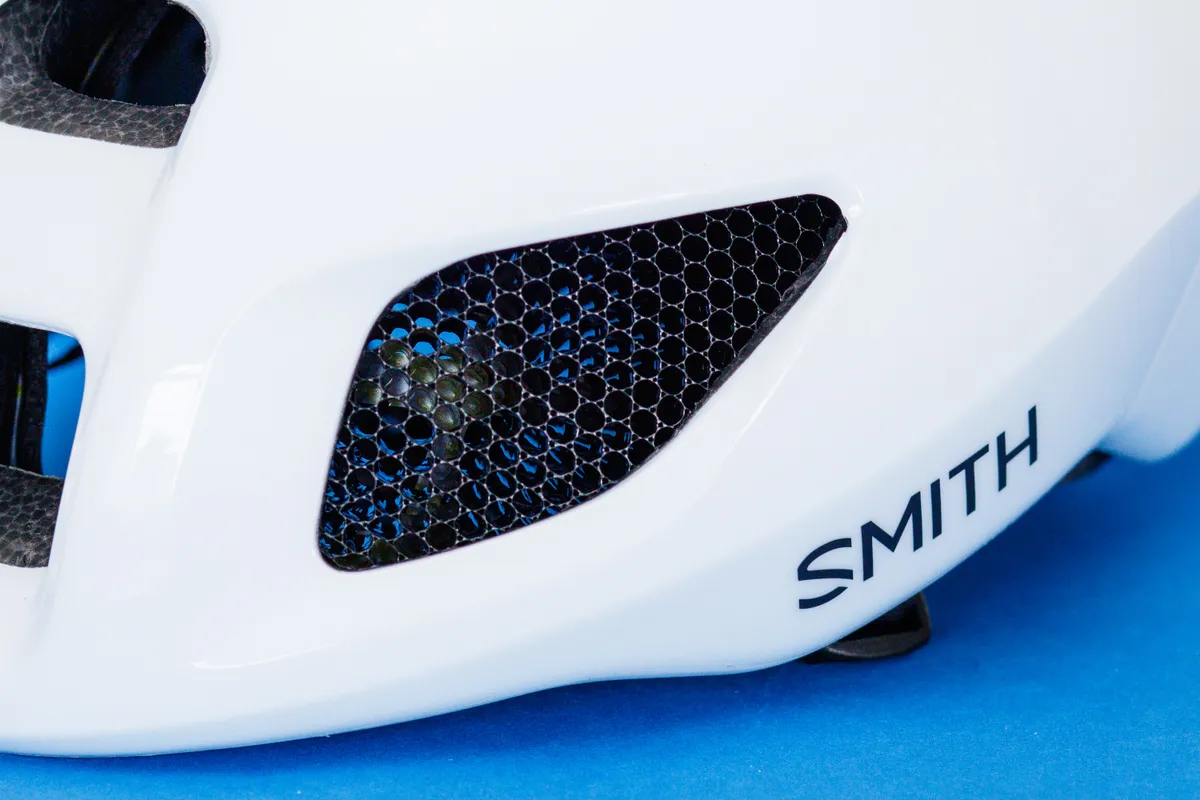
As with any bike helmet, an aero helmet’s primary job is to provide adequate protection for your head.
While all of the helmets listed here meet or exceed the minimum required international safety standards (EN-1078 in the UK and EU or CPSC 1203 in the US), many will go above and beyond this level of protection.
Some helmets, for example, use alternative core materials, such as Koroyd or WaveCel, in place of (or in tandem with) standard EPS (Expanded Polystyrene) foam in certain areas.
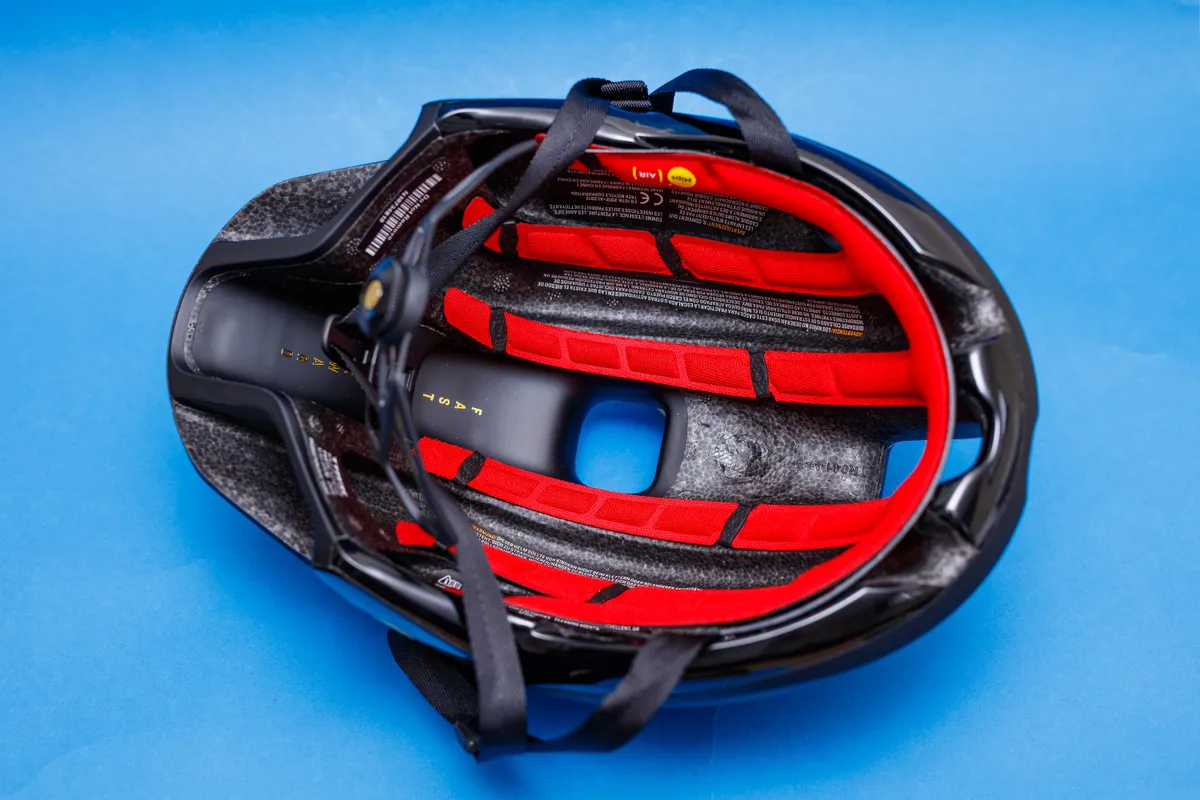
Features aimed at reducing the effects of rotational brain injuries from head impacts are also increasingly common.
Many helmets now include technology such as MIPS liners, for example, while other brands have devised their own internal testing protocols (such as Kask’s WG11 certification), with the aim of ensuring their helmets offer enhanced protection beyond the basic legal requirements.

